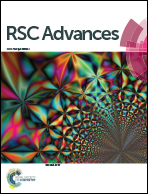Fine tuning of metal-specific activity in the Mn-like group of cambialistic superoxide dismutases†
Abstract
Among Fe/Mn superoxide dismutases (SODs) a very peculiar sub-class is that of cambialistic SODs. These proteins are active with either Fe or Mn in the active site, in contrast with the other SODs that are strictly metal-specific. Here we report the metal-dependent regulation of the activity and the crystallographic structure of the cambialistic SODs from the dental pathogen Streptococcus mutans (SmSOD) and the food-industry bacterium Streptococcus thermophilus (StSOD). The two enzymes share a high sequence identity (86.2%) and present very similar three-dimensional structures. A detailed comparison with the other cambialistic SODs, found in the Protein Data Bank, allowed the identification of two sub-groups of cambialistic enzymes, the Fe-like and the Mn-like. In particular, SmSOD and StSOD were classified as belonging to the Mn-like sub-group; this assignment was in good agreement with the activity data, showing a significantly higher catalysis in Mn-bound forms of SmSOD and StSOD with respect to their Fe-forms. However, in spite of a very similar Mn-dependent activity, SmSOD and StSOD display a consistently different Fe-dependent activity, SmSOD being three-times less efficient than StSOD in the Fe-bound form. The analysis of the X-ray structures suggests that this difference could be related to the effect of a fraction of enzyme molecules possessing an atypical hexa-coordinated iron ion in the active site of SmSOD. These new structural data provide deeper insights into the family of cambialistic SODs.


 Please wait while we load your content...
Please wait while we load your content...